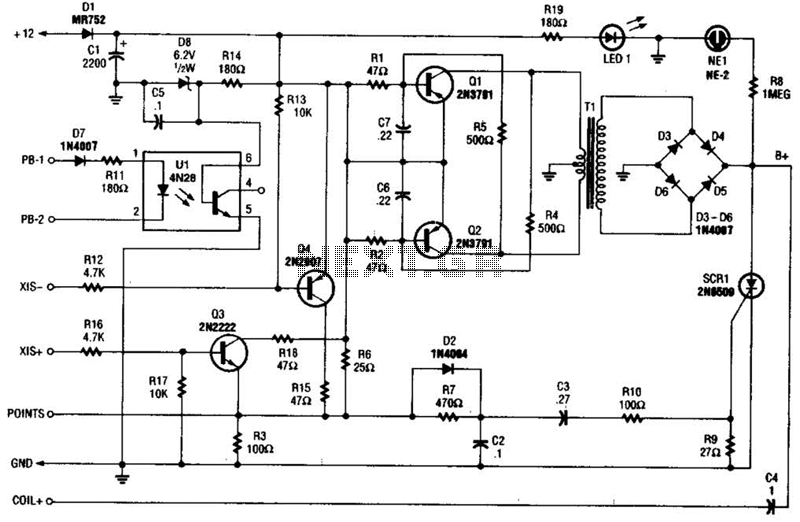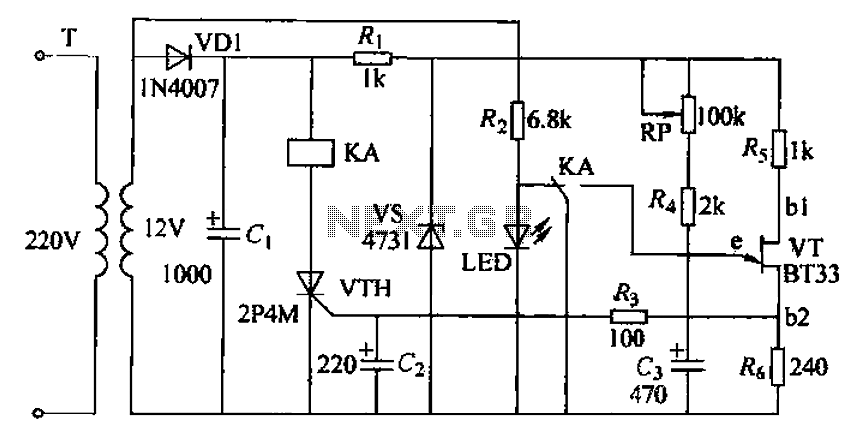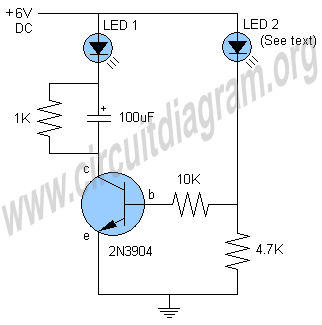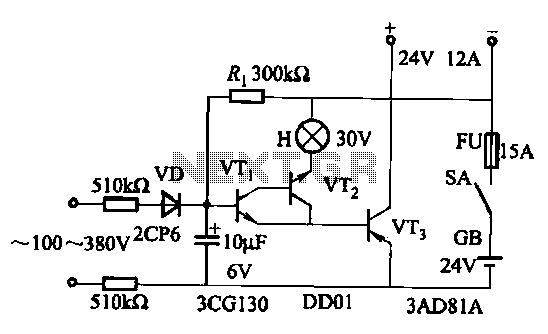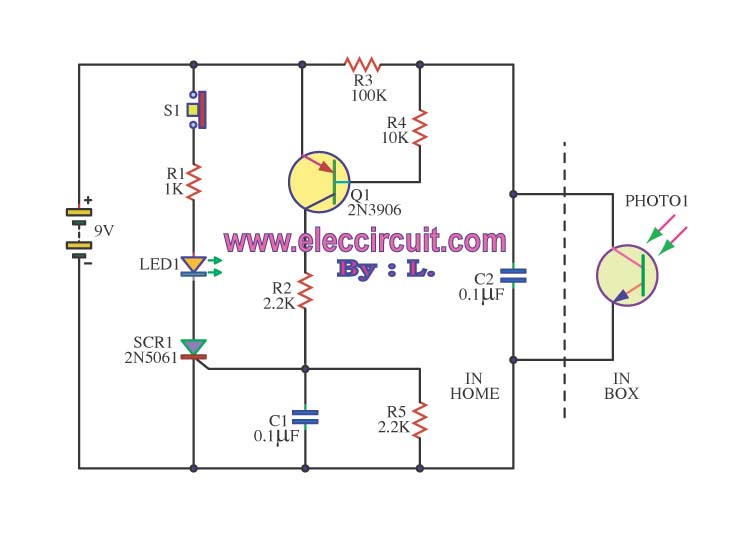
transistor ignition shematic 3
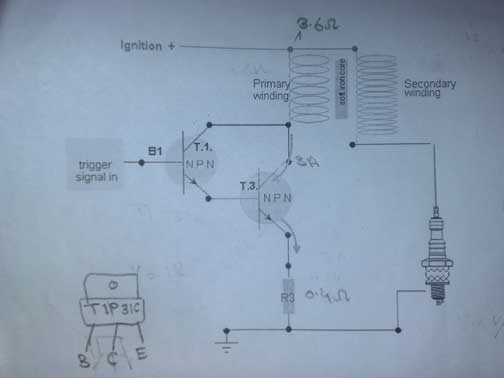
A request for assistance has been made regarding the development of a transistor ignition system to replace the point breaker in a motorcycle. The individual has researched extensively online but has not found a simple and effective circuit. The available information often lacks details on components and is outdated. It is noted that small transistor packages, likely Hall Effect sensors from manufacturers like Honeywell (e.g., SS466A), are utilized to detect the magnetic field of a rotating magnet. These sensors drive larger TO220 transistors, although the specific part numbers are not visible. Other components mentioned include diodes and resistors. The individual recalls encountering a simple circuit for a transistorized ignition that utilized a PNP power transistor, which could be adapted to work with a Hall sensor. However, the exact circuit details and source are not available. Additionally, there are inquiries about a schematic that lacks clear input points for signal connections and clarification on the polarity of the wiring.
A transistor ignition system serves as an efficient alternative to traditional point breakers in motorcycle ignition systems. The proposed circuit typically consists of a Hall Effect sensor, which detects the magnetic field produced by a rotating magnet attached to the engine's flywheel. This sensor generates a pulse signal that triggers a power transistor, such as a PNP transistor in a TO220 package, which subsequently controls the ignition coil.
The Hall Effect sensor, such as the Honeywell SS466A, operates by producing a voltage output when exposed to a magnetic field. The output from the sensor is connected to the base of the PNP transistor, allowing it to switch on and off based on the sensor's output. When the transistor is activated, it completes the circuit for the ignition coil, allowing current to flow and generating a spark at the spark plug.
In addition to the Hall Effect sensor and the PNP transistor, the circuit will include diodes for flyback protection, which safeguard the transistor from voltage spikes generated by the ignition coil when it is turned off. Resistors may also be included to limit current and ensure the proper operation of the circuit.
For the schematic, the input signal from the Hall Effect sensor should be connected to the base of the PNP transistor. The collector of the transistor is connected to the positive terminal of the ignition coil, while the emitter is connected to ground. The polarity of the connections is crucial; thus, it is important to ensure that the positive side of the power supply is connected to the appropriate terminals of the ignition coil and the transistor collector.
In summary, the design of a transistor ignition system involves careful consideration of component selection, circuit configuration, and input/output connections to ensure reliable operation. Proper documentation and clear labeling of circuit diagrams are essential for effective implementation and troubleshooting.Hello All Experts, i m in need of Transistor Ignition to replace point breaker from my motorcycle. i read many many articles in internet google and almost all forums but did not yet found working and simples smallest circuit yet. and which i found they dont have answers about parts of any other related question and most of thm copid and old and pa
rts hardly available in market. The small transistor like packages are probably the Hall Effect sensors from someone like Honeywell (SS466A ). It looks like these are used to pick up the magnetic field of a rotating magnet (that cylindrical silver thing) and are used to drive the big TO220 transistors (cannot see the part number).
The other packages are diodes and resistors. Unfortunately I cannot give you any more circuit detail than that Somewhere out in "internetland" there is a simple circuit for a transistorized ignition that used one PNP power transistor. It still used breaker points, but it would be very simple to adapt the base input to work with a Hall sensor or the like.
I`m sorry I never saved the web address, but its out there. If I could find it, anyone can. I bought all of the parts to build it along with a small box to house it. I sold the bike and moved and I don`t know if I saved any of that stuff or not. If I can find it you can have it for a very low price. Dear Debe, Thanks for your post, it is really informative and wonderful. i have few question regarding this schematic aas i m dumb at electronics. i will use pulse trigger for triggering. where to connect the input of signal the schematic you attached has no input point for signal also need which point is Negative side and what is positive side of wires/connections. 🔗 External reference
A transistor ignition system serves as an efficient alternative to traditional point breakers in motorcycle ignition systems. The proposed circuit typically consists of a Hall Effect sensor, which detects the magnetic field produced by a rotating magnet attached to the engine's flywheel. This sensor generates a pulse signal that triggers a power transistor, such as a PNP transistor in a TO220 package, which subsequently controls the ignition coil.
The Hall Effect sensor, such as the Honeywell SS466A, operates by producing a voltage output when exposed to a magnetic field. The output from the sensor is connected to the base of the PNP transistor, allowing it to switch on and off based on the sensor's output. When the transistor is activated, it completes the circuit for the ignition coil, allowing current to flow and generating a spark at the spark plug.
In addition to the Hall Effect sensor and the PNP transistor, the circuit will include diodes for flyback protection, which safeguard the transistor from voltage spikes generated by the ignition coil when it is turned off. Resistors may also be included to limit current and ensure the proper operation of the circuit.
For the schematic, the input signal from the Hall Effect sensor should be connected to the base of the PNP transistor. The collector of the transistor is connected to the positive terminal of the ignition coil, while the emitter is connected to ground. The polarity of the connections is crucial; thus, it is important to ensure that the positive side of the power supply is connected to the appropriate terminals of the ignition coil and the transistor collector.
In summary, the design of a transistor ignition system involves careful consideration of component selection, circuit configuration, and input/output connections to ensure reliable operation. Proper documentation and clear labeling of circuit diagrams are essential for effective implementation and troubleshooting.Hello All Experts, i m in need of Transistor Ignition to replace point breaker from my motorcycle. i read many many articles in internet google and almost all forums but did not yet found working and simples smallest circuit yet. and which i found they dont have answers about parts of any other related question and most of thm copid and old and pa
rts hardly available in market. The small transistor like packages are probably the Hall Effect sensors from someone like Honeywell (SS466A ). It looks like these are used to pick up the magnetic field of a rotating magnet (that cylindrical silver thing) and are used to drive the big TO220 transistors (cannot see the part number).
The other packages are diodes and resistors. Unfortunately I cannot give you any more circuit detail than that Somewhere out in "internetland" there is a simple circuit for a transistorized ignition that used one PNP power transistor. It still used breaker points, but it would be very simple to adapt the base input to work with a Hall sensor or the like.
I`m sorry I never saved the web address, but its out there. If I could find it, anyone can. I bought all of the parts to build it along with a small box to house it. I sold the bike and moved and I don`t know if I saved any of that stuff or not. If I can find it you can have it for a very low price. Dear Debe, Thanks for your post, it is really informative and wonderful. i have few question regarding this schematic aas i m dumb at electronics. i will use pulse trigger for triggering. where to connect the input of signal the schematic you attached has no input point for signal also need which point is Negative side and what is positive side of wires/connections. 🔗 External reference
Warning: include(partials/cookie-banner.php): Failed to open stream: Permission denied in /var/www/html/nextgr/view-circuit.php on line 713
Warning: include(): Failed opening 'partials/cookie-banner.php' for inclusion (include_path='.:/usr/share/php') in /var/www/html/nextgr/view-circuit.php on line 713
